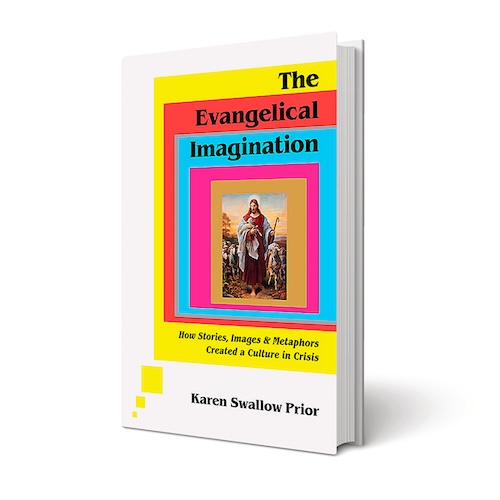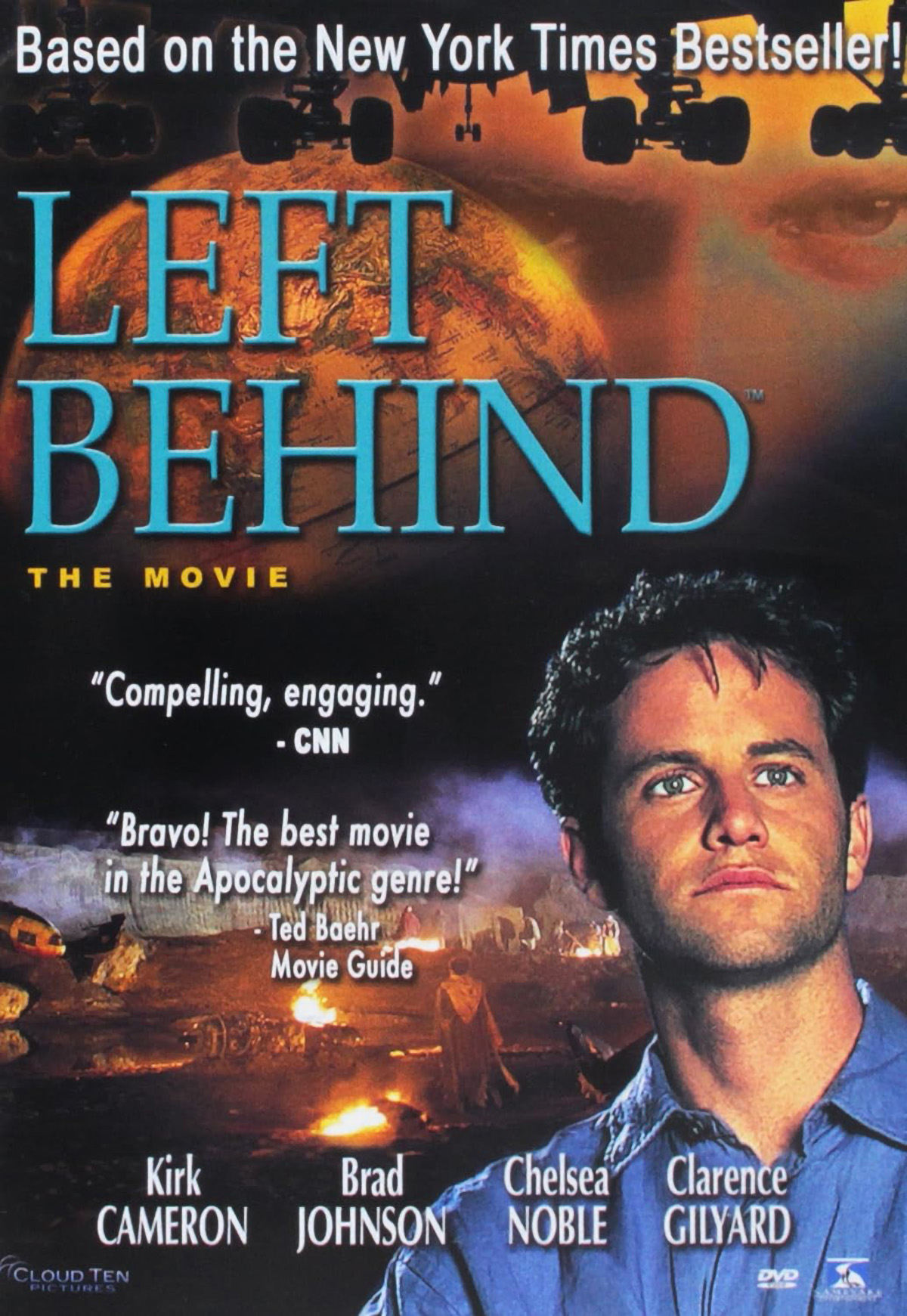All cultures are intertextual. Our media, music, art, and literature are shaped by, well, older media, music, art, and literature. Consider this: Indiana Jones is simply a rehash of H. Rider Haggard’s character Allan Quatermain from King Solomon’s Mines. The TV sitcom The Simpsons is a rehearsal of The Flintstones, which itself was a cartoon expression of the 1950s sitcom The Honeymooners. Today’s Marvel superheroes are just secularized saints from the Middle Ages. Concerning religion, that too bears the imprint of older books, prints, and literary expressions. The many biographies about modern, popular figures like Billy Graham, Dwight Moody, and Charles Spurgeon contain a similar mix of history and hagiography that one finds in Athanasius’ Life of Antony from the fourth century. The extraordinarily popular self-help guide to Christian manhood, the bestselling Wild at Heart by John Eldredge, is a cross between a Carolingian chivalry code and a monastic charter for cloistered monks.
Too many evangelicals have been stunted by partisan politics, engrossed by end times fantasies, and immersed in megachurch mania. Yet they retain vast spiritual and cultural resources that, if cultivated, can result in a reformed and reinvigorated imagination equipped to face the challenges of the future.

How Stories, Images & Metaphors Created a Culture in Crisis
By Karen Swallow Prior
(Brazos, 2023)
In short: We’re all walking in borrowed suits! We’re all, for better or worse, shaped by the literary tropes and cultural milieu we’ve inherited and chosen to fill our minds. All people are shaped by the metaphors, stories, and language of imagination, and this is no less true of American evangelicals.
This brings us to a fascinating book by Karen Swallow Prior, Ph.D., called The Evangelical Imagination, which maps the interesting, sometimes strange, but never dull relationship between American evangelicals and their cultural worlds, as exemplified by the literature and art that evangelicals have either curated or created. Prior offers her own diagnosis of what has shaped American evangelicals for good and for bad. Prior, who has previously taught at both Liberty University and Southeastern Baptist Theological Seminary, is no stranger to the strange ways of American evangelicals. Some might accuse her of painting American evangelicals with too broad a brush, though much of what she says could apply to the wider pan-Anglo evangelical world, and she is quite aware of the diversity and fluidity of the term “evangelical” itself. In any case, her stated aim in The Evangelical Imagination is to “tease out the elements of the evangelical social imaginary in such a way that those elements that are truly Christian can be better distinguished from those elements that are merely cultural.” Her concern is to make sure that “Christian culture” is shaped more by Christianity than by wider tropes and temptations of culture.
Prior begins by exploring the theme of “awakening” in literature, typified by epiphanic realizations of some metaphysical or moral truth that produces a transformation in the subject. In the spiritual sense, this can be connected to the American “Great Awakenings” as a journey into pious renewal. Similarly, in the moral sense, “wokeness” is the awareness of some grave moral injustice and “is simply another expression of the universal symbol of awakening that appears across time and culture.” All of us, Prior says, are moving from dreams to awakenings.
Conversion means nothing, it is shallow, without transformation and conformity to Christ.
In relation to conversion (an evangelical leitmotif if ever there was one), Prior describes the Puritan and Pietist emphasis on an inward turning to Jesus and how that finds expression, parody, and criticism in various pieces of literature. While I dispute her picture of Anglican clergy in the 18th and 19th centuries as perfunctory parsons of a stale state religion, her point is to be taken that conversion means nothing, it is shallow, without transformation and conformity to Christ.
Prior adds that conversion narratives, from Augustine’s to Jonathan Edwards’, have been an important facet of personal and corporate religious experience. Spiritual autobiography has always had a big influence on America and its churches. The telling of the conversion is a model of testimony, but it also requires an element of trust. Since the 1990s, it is common to ask, “Do we trust the person telling the story of their conversion?” The point I take away is that while there are many pilgrims who make progress, many people who find Christ on the road to Damascus, we might want to be suspicious of people who find Christ on the road to a GOP primary in Des Moines, Iowa!
The iconoclasm of evangelicalism can easily lend itself to platonic dualism or a docetic discipleship.
Nothing indicates better the eclectic nature of evangelicalism than its obsession with self-improvement and better Christian living. Prior points to literature, art, and political analysis to show how the West came to see self-improvement of morals and abilities as a civic duty. While I think the idea of self-improvement has some traction in ancient Stoic philosophy, nonetheless Prior’s point holds: the evangelical self-help industrial complex is evidence of its indebtedness to the surrounding culture. To this day, I am still haunted, tormented in fact, by the knowledge that Rick Warren’s book The Daniel Diet has sold more copies than my 30 books on Christian theology, history, Bible commentaries, and religious liberty—combined.
Prior also notes how evangelicals have been basking in sentimentality for centuries, even though sentimentality is a double-edged sword, leaving us between sympathy and self-centredness. Prior points out that art causes us to re-live emotions, while sentimental art causes us to re-live emotional experiences. In artistic representations of Christ, for example, one problem is that its aim is to comfort rather than to challenge. Christian imagination, argues Prior, cannot abandon its emotional register, but neither should it be ruled by it.

Prior adds that while religion often deals in intangibles, there is also an important matter of materiality to the Christian faith. The iconoclasm of evangelicalism can easily lend itself to platonic dualism or a docetic discipleship that divorces spirituality from our embodiment. The danger is that evangelicals trade aesthetics for pragmatics and divorce the word from the world. Her discussion about art leads to a salient observation that “the God of our faith is not just transcendent but is here with us—and, like us, not just spiritual but material too.” I concur with Prior that evangelicals need less cringy kitsch in their culture (e.g., pictures of a buff Jesus bench pressing the sin of the world) and more creation mandate (e.g., exercising their calling to make a material difference in matters of political gravity, creative ventures, and promotion of the gospel).
The chapter on “Domesticity” was my clear favorite, as it traces the origins of the concept of home as a mixture of castle and chapel, the rise of the “domestic goddess,” and the transition of marriage from a transaction between families to the search for a companion with whom one can share an inner life. Prior examines the transition of domesticity from dowries and drawing rooms to a home that houses a body and a body that houses a soul unto the Lord. The only thing I wish Prior had added is that the “cult of true womanhood,” while having Christianized versions that major on “piety, purity, submissiveness, and domesticity,” can find secular equivalents with women who courageously, so it goes, abandon family for self-discovery, self-affirmation, and self-expression.
The LaHaye/Jenkins Left Behind novels are not that much of an innovation but merely fictionalized accounts of the end times with many precursors.
The most challenging and confrontational chapter, however, is the one on “empire.” Prior notes how empire is weaved into our poetry, language, and culture. Americans, for all their love of political independence, are still a petulant colony of the British Empire. She uses the examples of Daniel Defoe’s novel Robinson Crusoe and Rudyard Kipling’s poem “The White Man’s Burden” to show how easily westerners took to the subjugation, colonization, and suppression of foreign lands. Indeed, American evangelicals have been all too eager to build their own empires of media, religion, education, and political powerhouses that were, too often, self-serving. Instead, she applauds the Johnny Cash cover of “Hurt” to urge evangelicals to consider their empire building as erecting an “empire of dirt.” I resonated with this chapter as I have been reading William Dalrymple’s book The Anarchy about the brutality of the British East India company in its gradual takeover of India, and also Nigel Biggar’s fascinating book Colonialism: A Moral Reckoning, which attempts to nuance standard depictions of British expansion. It is important to remember that “empires” are never as one-dimensional as Star Wars villains and always a mix of good, bad, and ugly. But on the whole, I agree with Prior: one who wants to build an empire, or be the chaplain to an empire, is making a potentially Faustian pact with the Devil!
The American evangelical church today, glutted with its appetite for position, privilege, and power, is well due for a cathartic purge and a new and salutary reformation. The author insists that we need to imagine such a reformation of abuses and errors not as a long-ago history but as a generation-to-generation semper reformanda in every respect. One wonders, though, given Prior’s pessimistic diagnosis of American evangelicalism, whether reformation is enough, or whether it requires something as radical as a revolution, as revolutions tend to be more disruptive to the status quo. What such a revolution would look like is fodder for another book, perhaps.

Despite my minor demurrals, this is a book that elegantly weds reflections on literature, art, and music to biblical meditations and cultural commentary on the state of the American evangelical church. Prior is at her best when making connections between classic literary culture and the contemporary religious landscape in the U.S. It’s a book that will be eminently enjoyable to anyone with an interest in literature, religion, and culture—a fascinating read that is learned, clear, and challenging all at the same time.




